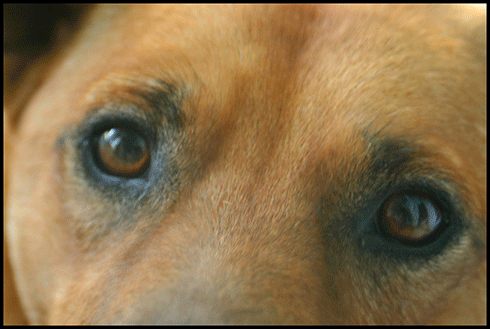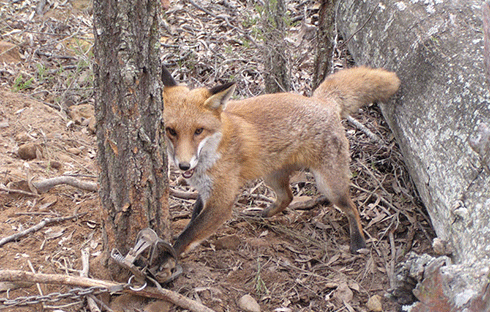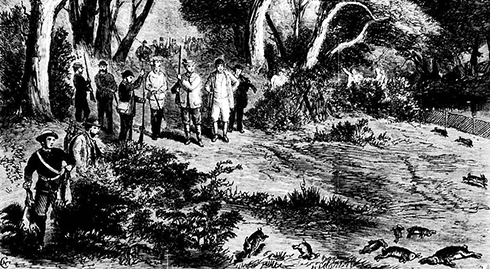
|
Published: 14 April 2014
How much suffering is OK when it comes to pest control?
Dr Clive Marks has published widely on pest control in peer-reviewed science journals. In a 2013 paper – ‘Killing Schrödinger’s feral cat’ – Dr Marks recounts his experience of experimenting on live cats to identify a selective feral cat poison. While he had set out to develop a more ‘humane’ approach compared to the conventional ‘predacides’, such as 1080, his research led him to question why animal welfare remains largely sidelined in the pest control debate.

|
|
A dingo: as humans have colonised the planet, they’ve brought exotic animals with them, a process that’s accelerated over recent centuries. While ecologists agree on the need to control pest species in order to protect native animals, livestock and habitat, some scientists are now also calling for a more considered, humane approach than we've had in the past. Credit: Blue Gum under CC BY-NC-SA 2.0
|
Some 150 years ago, Acclimatization Societies all over Australia began working diligently to introduce ‘productive and appealing’ species to the new colonies. Notable Victorian-era scientists aimed to transform the Australian bush through introducing plants and animals from far-flung corners of the British Empire.
It was no small operation, and involved institutions that are familiar to us even today. The Melbourne Zoo for instance was originally established as a holding place for many of the imported exotic species pending their release to the wild.
The Acclimatizers were astonishingly successful. The great diversity and abundance of introduced species in Australia is largely their legacy and a testament to bygone values that shaped our ecosystems. Hundreds of millions of unwanted mammals alone (not to mention other classes of vertebrates) now form a vast ecological and animal welfare conundrum. Our failure to eradicate even one exotic vertebrate from continental Australia tells us much about our inability to retrospectively right a profound ecological wrong.
Today, a key focus of conservation biologists is to manage the long-term survival of native animal populations and ecosystems threatened by invasive species. In contrast, animal welfare science is more concerned with the basic health and affective states of all animals (their perception of pain, fear, suffering, threat, etc).
Clearly, a clash between the two scientific cultures – conservation and animal welfare – seems unavoidable.
Each scientific discipline has long been based on a set of shared values that see either the conservation of ecosystems or promotion of animal welfare as a good. But how animal welfare values relate to pest animals is seldom explored. In the absence of a clear ethic, a professional culture based upon strongly held yet largely subjective belief has emerged to replace it.
‘We’ll never have a tool as good as 1080,’ says the ecological modeller. He calls it a tool rather than a poison; it is another interesting euphemism for something that kills. ‘That’s why we use it and that’s why we must protect it,’ he says.
He has never seen a cat die from 1080 poisoning, yet reminds me that his work is the big picture. To him I’m dealing only with individual animals and this matters little on the scale of populations and ecosystems. It is ecological management after all, chemotherapy for the environment.
‘Anyway, just look at what feral cats do to wildlife! They don’t care about how our wildlife suffers, so why should we care if they suffer? Every good wildlife scientist hates cats,’ he tells me. ‘We have to educate people.’
(From ‘Killing Schrödinger’s feral cat’)
Defining our moral obligations to ecosystems on the one hand, and the vast Australian underclass of exotic fauna on the other, needs to be won in the ethical no man’s land lying between animal welfare and conservation science. Most of the arguments used to justify the need for good animal welfare practices have little relevance to the invasive species conundrum. It is a topic that has largely been left out in the cold.
Historically, humans have shown concern for animals that are beneficial to us; those conveniently aligned with our own self-interest. Whether it be charismatic wildlife species, dairy cattle or even pet rabbits, promoting good welfare outcomes selectively is a pragmatic way of ensuring the wellbeing of animals that we value.
But what of animals that have no direct value or threaten our resources? Should we value their suffering too?
More and more Australians appear to believe we should, and do not base their values concerning animals solely upon self-interest. Increasingly, they are demanding a say in how Australia’s wildlife is managed and the significance of animal suffering per se.

|
|
A fox caught in a ‘soft jaw’ trap: many current pest management strategies have poor animal welfare outcomes. Credit: NSW DPI
|
Examples of discord and tension between those holding such values and current practice are not hard to find. Whether it is animal experimentation, or the slaughter of Australian livestock in countries with little or no animal welfare regulation, community values are increasingly influential and ignored at our peril.
Sadly, the acceptability of many current pest management practices largely depends on the community not being confronted with the poor animal welfare outcomes that arise from their use.
Otherwise, many approaches would be seen as falling well short of community expectations. Whether they be trapping technologies used for wild dogs and dingoes developed more than a century ago, or the use of fumigants such as chloropicrin that were banned by the Geneva Conventions after the First World War, their continued use points to a culture that has not kept pace with a progressive shift in community expectations.
Consequently, pest control has been caught in an innovation death spiral, largely because the suffering of pest animals has not been valued or considered a sufficient priority to warrant appropriate investment in better approaches.
The lack of priority may be partly because, in the past, pest animals were regarded as morally ‘bad’ and perhaps deserving of poor welfare. In Australia, the rabbit, feral cat, red fox and feral pig could hardly be viewed more negatively, and some of the techniques we have applied for their control could hardly deliver poorer welfare outcomes.
At the very least, the vilification of pest species is unhelpful and has no place in science or wildlife management. It also distracts from the fact that humans, in some way or other, introduced the invasive species in the first place. In Australia we should never be too ready to forget this, nor that scientists of the day were complicit.
As the Acclimatizers demonstrated, scientific and community values have a nasty tendency to change direction as readily as a windsock. Unexamined dogmas once regarded as self-evident can later be considered woefully ignorant. While we might be harsh in our judgement of the Acclimatizers, we have still to fully address the ethical conundrums they bequeathed us – as well as some quaint dogmas of our own.
It is time we based decisions on how to manage our vast populations of unwanted animals using an ethic that embraces our concern for both ecosystems and animal welfare. Doing this requires that we wrestle with one of the most profound issues of biology and philosophy – how to value life itself.
In 1944 Erwin Schrödinger published a book called What Is Life? In it he explained the phenomenon of life better than any biologist had before. He noted that life defies the physics of the universe in a fundamental way as it runs contrary to Newton’s second law of thermodynamics. Simply put, as the non-living world breaks down and decays, losing information and complexity, life goes in the opposite direction. All living things share this remarkable contrarian road, marching uphill against increasing entropy.
If you think about life as Schrödinger did, you are compelled to conclude that life can be no more malicious than gravity; it is a force of sorts. An adequate definition of life goes well beyond clichés and self-serving beliefs – that see animals locked in a human-centred soap opera of the villain, victim and vanquished – to a much bigger and as yet unclear picture. Life may be tenacious or fragile, rare or abundant and sometimes we humans have decided that it is pernicious, but all life is engaged in a common struggle for more life. For reasons that I cannot pretend come from a purely rational basis, humility seems appropriate in the face of such an enigma.
Biologists, it would seem, should never be too ready to glibly justify killing or diminish the impact that this has on them or others. Although emotion has no part in the application of the scientific method, science has never demanded emotional nihilism or the abandonment of compassion from its practitioners. Dogma and killing are dangerous bedfellows, particularly when the emotional consequences of killing are diminished or never spoken of. As Ghandi thought, science without humanity is one of the roots of violence. Surely our humanity as scientists must be measured by our capacity to empathise, as no biologist should expect to carry the burden of killing for science too easily. Because only a psychopath kills without emotion.
(From ‘Killing Schrödinger’s feral cat’)
Dr Clive A Marks is the director of Nocturnal Wildlife Research. He was previously head of the Victorian Government’s Vertebrate Pest Research Department and an honorary fellow at the University of Melbourne. Dr Marks has led research and development to improve monitoring and control of feral cats, red foxes, rabbits and wild dogs, with an emphasis on improved animal welfares. His current research is focused in SE Asia where he is developing a remote sensing technology for the survey of endangered carnivores.




